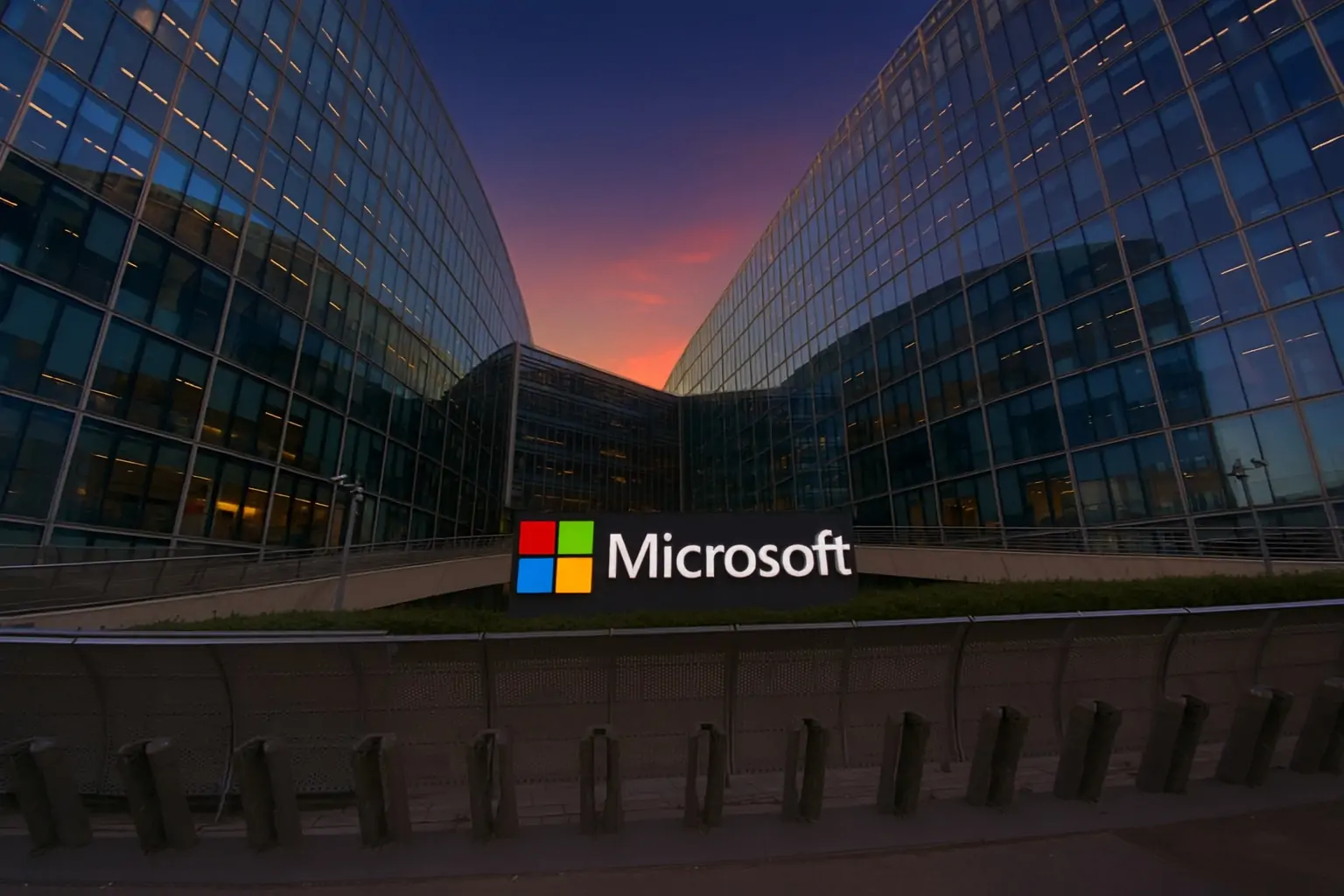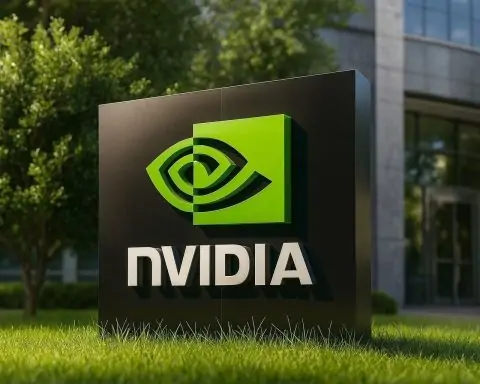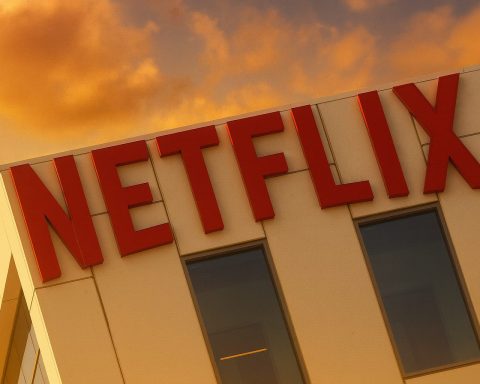Published: November 22, 2025 – This article is for informational purposes only and is not financial advice.
Microsoft stock today: where MSFT stands in late 2025
Microsoft (NASDAQ: MSFT) has come down from euphoria to something closer to “priced-for-greatness-but-not-perfection.”
- Latest price: around $472 per share at the close on November 21, 2025. [1]
- Market cap: roughly $3.5 trillion. [2]
- 52‑week range: about $344.79–$555.45, with the all‑time high set on October 28, 2025. [3]
- Valuation: trailing P/E ~33–34, forward P/E ~28, dividend yield ~0.75%. [4]
- 2025 year‑to‑date performance: roughly +12% (price‑only), beating the broader market but well below its blockbuster 2023 surge. [5]
From its October peak near $555, Microsoft has slid about 15%, as investors digest huge AI capital spending, a wave of new competition in the AI cloud race, a surprise downgrade from a major European bank, and headline‑grabbing share sales by the Gates Foundation.
Yet fundamentally, Microsoft is still putting up some of the strongest numbers in big tech.
- Fiscal 2025 (year ended June 30, 2025) was a record:
- Revenue $281.7 billion, up 15%.
- Operating income $128.5 billion, up 17%.
- Azure alone surpassed $75 billion in revenue, up 34% year‑on‑year. [6]
- Q1 FY26 (quarter ended Sept. 30, 2025) continued the trend:
- Revenue $77.7 billion, up 18%.
- GAAP EPS $3.72, non‑GAAP EPS $4.13, up 23% on a comparable basis.
- Microsoft Cloud revenue $49.1 billion, up 26%, with Azure and other cloud services up 40%. [7]
The core story heading into the end of 2025 is simple but tense:
Can Microsoft’s AI‑driven growth justify its massive capital spending and premium valuation, while weathering multi‑cloud shifts and insider selling?
Let’s break down what the latest news and forecasts say.
Wall Street’s Microsoft stock forecast into year‑end 2025
Most major analysts are still bullish on Microsoft — but with more nuance than earlier in the AI boom.
12‑month price targets (issued in late 2025)
Across big banks and research houses, the average 12‑month price target for MSFT now clusters in the low‑ to mid‑$600s:
- MarketBeat: average $634 from 40+ analysts, with targets ranging from $490 to $730 (about 34% upside from ~$472). [8]
- StockAnalysis / consensus summary: average target around $628, implying ~33% upside; lowest target $500, highest $700. [9]
- Investing.com analyst consensus: average close to $625, high $730, low $483, with a “Strong Buy” majority. [10]
- TipRanks: average $632 from 35 Wall Street analysts (range $500–$700). [11]
In other words, Wall Street still sees 30–35% upside over the next year, even after the recent pullback.
Year‑end 2025 specific forecasts
A few outlets explicitly frame their targets around where Microsoft could be by late 2025 / early 2026:
- 24/7 Wall St. recently set a year‑end 2025 target of $563.64, roughly 15–16% above current levels, emphasizing Azure strength but also warning about heavy AI capex and potential supply constraints. [12]
- Longer‑term, that same shop has modeled Microsoft sustaining ~10% revenue growth and maintaining a premium multiple, seeing the stock potentially in the high‑$800s by decade‑end if execution holds. [13]
A mix of big‑name analysts is also leaning bullish:
- Morgan Stanley recently highlighted CIO survey data showing Microsoft as the top expected winner of enterprise AI spend, reiterating an Overweight rating and a $625 target. [14]
- Oppenheimer upgraded MSFT to “Outperform” with a $600 target, arguing Microsoft’s AI capabilities are still underappreciated by the market. [15]
- Wedbush’s Dan Ives has repeatedly called Microsoft the leader in cloud and AI infrastructure, also lifting his target to the $600 range earlier this year. [16]
So why is the stock still stuck in the $470s instead of racing back toward its highs? To understand that, you have to look beyond the targets and into the fault lines.
AI, Copilot and the “Frontier Firm”: Microsoft’s bull case heading into 2026
1. Azure and Microsoft Cloud are still on fire
Despite all the hand‑wringing, Intelligent Cloud remains Microsoft’s main growth engine:
- In Q1 FY26, Intelligent Cloud revenue hit $30.9 billion, up 28%, with Azure and related services up 40% year‑on‑year. [17]
- For fiscal 2025 overall, Microsoft Cloud revenue reached $168.9 billion, up from $137.7 billion a year earlier. [18]
Many Wall Street models for 2026–2027 assume mid‑30s Azure growth can continue for several years, helped by AI inference and training workloads, plus an eventual “Copilot tax” across Office, Dynamics, GitHub and security products. Some bullish analysts see Microsoft clearing the informal “Rule of 60” (revenue growth + operating margin) that justifies a premium multiple in software. [19]
2. Copilot, agentic AI and Ignite 2025
At Microsoft Ignite 2025, the company went all‑in on “agentic AI” and the concept of the “Frontier Firm” — organizations that are “human‑led and agent‑operated.”
Key announcements included:
- New Copilot agents for Word, Excel and PowerPoint, which can autonomously draft, re‑work and analyze documents, spreadsheets and presentations through natural‑language prompts inside Microsoft 365. [20]
- Agent 365, a centralized platform for managing AI agents inside organizations (provisioning, permissions, telemetry, security), treating AI workers almost like human employees in IT systems. [21]
- A broader Frontier Firm AI Initiative with Harvard’s Digital Data Design Institute, bringing in big corporate names like Barclays, Mastercard, Eli Lilly and Nestlé to experiment with multi‑agent AI architectures. [22]
On top of that, Microsoft announced it would bring OpenAI’s Sora 2 video‑generation model into Microsoft 365 Copilot’s “Create” experiences, letting business users generate branded clips, explainer videos and marketing assets directly from text prompts. [23]
If these tools prove sticky and enterprises standardize on Microsoft for AI‑enhanced productivity, the upside is enormous — not just through incremental license fees, but through higher usage of Azure, security tools and data platforms.
3. New AI partnerships: Anthropic, Nvidia… and still OpenAI
Just as OpenAI has diversified beyond Azure, Microsoft has diversified beyond OpenAI:
- In mid‑November, Microsoft announced a strategic partnership with Anthropic and Nvidia. Anthropic committed to buying $30 billion of Azure compute capacity, while Nvidia will invest up to $10 billion in Anthropic, and Microsoft up to $5 billion. [24]
- The deal positions Azure as a top‑tier home for Claude models and cements Microsoft’s access to high‑end Nvidia GPUs, even as AI chip supply remains tight.
At the same time, Microsoft and OpenAI restructured their partnership in late October:
- OpenAI will purchase an additional $250 billion in Azure services over several years.
- Microsoft will no longer have a right of first refusal on OpenAI’s cloud workloads, and OpenAI can now serve certain government workloads on other clouds. [25]
This dovetails with OpenAI’s headline‑grabbing $38 billion, seven‑year cloud deal with Amazon Web Services, which will provide huge amounts of Nvidia capacity on AWS. [26]
Net effect for Microsoft:
- It likely captures less than 100% of OpenAI’s future compute needs,
- but still secures massive, contracted Azure revenue from OpenAI,
- while simultaneously opening up new multi‑model, multi‑partner opportunities with Anthropic, Nvidia and others.
For bulls, this shows Microsoft is deeply embedded at every layer of the AI stack: models (OpenAI, Anthropic, in‑house), infrastructure (Azure, custom silicon, Nvidia), and applications (Copilot and vertical solutions).
The bear case: AI capex, “destructive economics” and margin pressure
The main reason Microsoft stock has cooled since late October is not a collapse in fundamentals — it’s concern about what it will cost to sustain this AI lead.
1. Capex shock and “range‑bound” worries
Even before the latest quarter, analysts were warning that generative AI requires much heavier capital investment than the first wave of cloud computing:
- Stifel’s Brad Reback described Microsoft’s stock as likely “range‑bound” as long as AI capex keeps surging faster than revenue, estimating Microsoft could spend around $80 billion on AI infrastructure in calendar 2025. [27]
- In earlier quarters, Microsoft’s earnings calls showed capex jumping into the tens of billions per quarter as it raced to build GPU‑dense data centers for AI workloads. [28]
In Q1 FY26, Microsoft did report strong profit growth, but investors remain laser‑focused on how many dollars of incremental Azure and Copilot revenue the company can squeeze out of each dollar of capex — especially as GPU prices remain high and datacenter construction costs climb. [29]
2. Redburn/Rothschild: the “lonely AI bear”
The anxiety around AI returns crystallized this week when Rothschild & Co Redburn’s Alex Haissl downgraded both Microsoft and Amazon from “Buy” to “Neutral”:
- Haissl argued the economics of generative AI are far more capital‑intensive than early cloud — suggesting GPUs may need to be replaced every few years, while pricing power is limited by fierce competition. [30]
- His note cut Microsoft’s price target to $500 and warned that unless capex falls or revenue per unit of compute rises substantially, AI projects risk becoming “value‑destructive” rather than accretive. [31]
This makes Haissl one of the first high‑profile analysts to openly say he no longer sees a clear bull case in the near term for Microsoft despite strong top‑line growth.
3. OpenAI goes multi‑cloud
The AWS–OpenAI $38 billion deal has also reset expectations about Microsoft’s AI “moat”:
- OpenAI is now actively spreading workloads across AWS, CoreWeave, Oracle, SoftBank‑backed projects and others, not just Azure. [32]
- The October restructuring explicitly removed Microsoft’s exclusive rights to host OpenAI workloads, even as it added that giant $250 billion Azure commitment. [33]
Bears worry that multi‑cloud AI will erode Azure’s pricing power and force Microsoft to keep spending aggressively just to maintain share in a market where AWS and Google are clawing back AI workloads.
4. Sector‑wide AI bubble fears
Add to this a broader narrative: high‑profile investors and commentators have started publicly warning about a possible AI infrastructure bubble:
- Michael Burry reportedly placed a $1.1 billion short bet tied to AI‑exposed names earlier this month, sparking a sharp sell‑off across chips and megacap tech. TechStock²+1
- Bill Gates himself, in a recent interview, said technology firms from Nvidia to cloud operators are all worrying about whether AI investments could overshoot, calling out bubble‑like behavior even as he stressed AI’s long‑term importance. [34]
In this climate, it’s not surprising Microsoft’s richly valued shares are reacting sharply to any hint that AI capex might not produce commensurate profits.
Bill Gates’ big sale: how worrying is the insider selling?
Another headline rattling retail investors: Bill Gates’ charitable trust has been unloading Microsoft stock at scale.
According to recent 13F filings and media reports:
- The Gates Foundation Trust sold roughly 17 million Microsoft shares in Q3 2025, cutting its stake by about 65% — from around $13.9 billion to $4.8 billion. [35]
- Microsoft went from being the trust’s largest holding to a much smaller position, as the portfolio was broadly streamlined and the number of total holdings trimmed. [36]
This understandably triggered “Should you sell, too?” headlines.
However, a few contextual points matter for any forecast:
- Gates has been diversifying for decades. He’s repeatedly said he plans to donate 99% of his wealth; reducing exposure to a single stock is consistent with that goal and not necessarily a judgment on Microsoft’s prospects. [37]
- The selling was done via the foundation trust, not necessarily Bill Gates’ remaining personal holdings, and largely at prices around $510 — above where shares trade today. [38]
- Large foundation rebalances are often driven by philanthropic spending plans, tax considerations and concentration limits, not by traditional stock‑picking logic.
Still, in the short term, such a large seller can contribute to technical pressure on the stock and feeds into the broader narrative that early AI beneficiaries are taking some chips off the table.
Microsoft stock outlook through the end of 2025: key drivers and scenarios
We’re only a few weeks from year‑end, so any precise price prediction would be guesswork. Instead, it’s more useful to think in scenarios based on the forces currently in play.
Below is a general, non‑personal framework — not a recommendation.
Bullish scenario (Microsoft grinds higher into year‑end)
What would need to happen:
- Markets refocus on fundamentals: double‑digit revenue and earnings growth, 40%+ Azure growth, and strong cloud bookings. [39]
- Management provides reassuring guidance on AI capex productivity — for example, signaling that capex intensity will peak in 2025 and moderate thereafter while margins remain robust. [40]
- The narrative shifts back toward Microsoft as the primary enterprise AI platform, helped by quick uptake of new Copilot agents and Agent 365. [41]
- Broader markets stabilize, giving megacap tech permission to resume leadership.
In that case, it’s easy to imagine Microsoft re‑testing the low‑$500s into the close of 2025, with investors treating recent downgrades as a buying opportunity and the consensus 12‑month targets in the $600s as credible. [42]
Base case (range‑bound consolidation)
This is arguably the scenario many analysts expect in the near term:
- AI capex and multi‑cloud worries don’t get dramatically better or worse.
- Q2 FY26 guidance is solid but not spectacular; Azure growth maybe nudges down a few points but stays well above 30%. [43]
- Additional downgrades are limited; most coverage remains “Buy” with 30%+ upside, but the market wants time to digest the big 2025 run‑up.
Under this scenario, Microsoft could chop between roughly $450 and $525 into year‑end, behaving like a high‑quality compounder going through a healthy pause while analysts re‑fine‑tune their AI models and capex assumptions.
Bearish scenario (AI enthusiasm cracks further)
Risks that could push the stock lower include:
- More analysts echo Redburn’s thesis that AI economics are structurally unattractive at current GPU costs, leading to multiple compression even if earnings stay strong. [44]
- Additional signs that OpenAI or other frontier model providers are shifting workloads away from Azure toward AWS, CoreWeave or others faster than expected. [45]
- A broader tech or AI correction, perhaps triggered by macro data or regulatory headlines.
In that environment, it’s not impossible to see Microsoft re‑testing the low‑ to mid‑$400s, especially given the stock’s strong run over the past three years.
Again, these are illustrative ranges, not precise forecasts or advice.
What to watch for MSFT between now and December 31, 2025
Regardless of your stance, a few concrete data points will likely matter most for Microsoft’s stock in the final stretch of 2025:
- AI capex commentary
- Any updated guidance on 2026–2027 capex, especially whether spending as a percentage of revenue has peaked, will be critical for valuation. [46]
- Azure AI utilization and margins
- Investors will look for signals about profitability per AI dollar — e.g., comments on how quickly AI workloads are monetizing and whether AI services carry higher or lower margins than traditional Azure workloads. [47]
- Copilot adoption metrics
- Any update on paid Copilot seats, usage frequency, and attach rates to Microsoft 365 licenses will help quantify how big the “AI tax” on knowledge workers can become. [48]
- Impact of Bill Gates’ selling
- If filings show continued large disposals, the “insider selling” narrative might weigh on sentiment, even if fundamentally it’s philanthropic rebalancing. [49]
- Multi‑cloud AI headlines
- More big OpenAI or Anthropic deals with non‑Azure clouds would reinforce fears that Microsoft’s AI moat is narrowing, while wins pointing to Azure as the preferred enterprise AI platform would support the bull case. [50]
Bottom line: cautious optimism with real execution risk
Heading into the end of 2025, Microsoft remains one of the strongest fundamental stories in global equities:
- Double‑digit revenue and earnings growth at enormous scale. [51]
- A dominant enterprise software and cloud franchise. [52]
- Leading positions in productivity AI (Copilot), agentic AI tools, and AI infrastructure. [53]
Most analysts still see substantial upside over the next 12 months, with average price targets in the mid‑$600s. [54]
However, unlike earlier in the AI hype cycle, the debate is now genuinely two‑sided:
- Bulls argue Microsoft is the default operating system for AI in the enterprise, and that heavy capex today will translate into durable, high‑margin cloud and software revenue.
- Bears warn that AI infrastructure may be overbuilt, that returns on capital could disappoint, and that a multi‑cloud world will compress margins and reduce Azure’s strategic lock‑in.
For investors, the key isn’t guessing where MSFT will close on December 31, 2025, but deciding:
Do you believe Microsoft can turn its unprecedented AI spending into outsized, sustainable cash flows — and are you comfortable paying a premium multiple while that thesis plays out?
Because that question, more than any short‑term chart move or insider sale, is what will ultimately drive Microsoft’s stock beyond 2025.
References
1. stockanalysis.com, 2. stockanalysis.com, 3. www.macrotrends.net, 4. stockanalysis.com, 5. www.statmuse.com, 6. www.microsoft.com, 7. www.microsoft.com, 8. www.marketbeat.com, 9. stockanalysis.com, 10. www.investing.com, 11. www.tipranks.com, 12. 247wallst.com, 13. 247wallst.com, 14. www.barrons.com, 15. www.marketwatch.com, 16. timesofindia.indiatimes.com, 17. www.microsoft.com, 18. www.microsoft.com, 19. www.marketwatch.com, 20. timesofindia.indiatimes.com, 21. www.theverge.com, 22. www.microsoft.com, 23. www.windowscentral.com, 24. apnews.com, 25. openai.com, 26. www.reuters.com, 27. www.barrons.com, 28. www.reuters.com, 29. www.microsoft.com, 30. www.businessinsider.com, 31. investorsobserver.com, 32. www.reuters.com, 33. openai.com, 34. timesofindia.indiatimes.com, 35. finance.yahoo.com, 36. timesofindia.indiatimes.com, 37. timesofindia.indiatimes.com, 38. m.economictimes.com, 39. www.microsoft.com, 40. www.investopedia.com, 41. www.theverge.com, 42. www.marketbeat.com, 43. www.microsoft.com, 44. www.investopedia.com, 45. www.reuters.com, 46. www.investopedia.com, 47. www.microsoft.com, 48. www.investopedia.com, 49. m.economictimes.com, 50. apnews.com, 51. www.microsoft.com, 52. www.microsoft.com, 53. www.microsoft.com, 54. www.marketbeat.com









